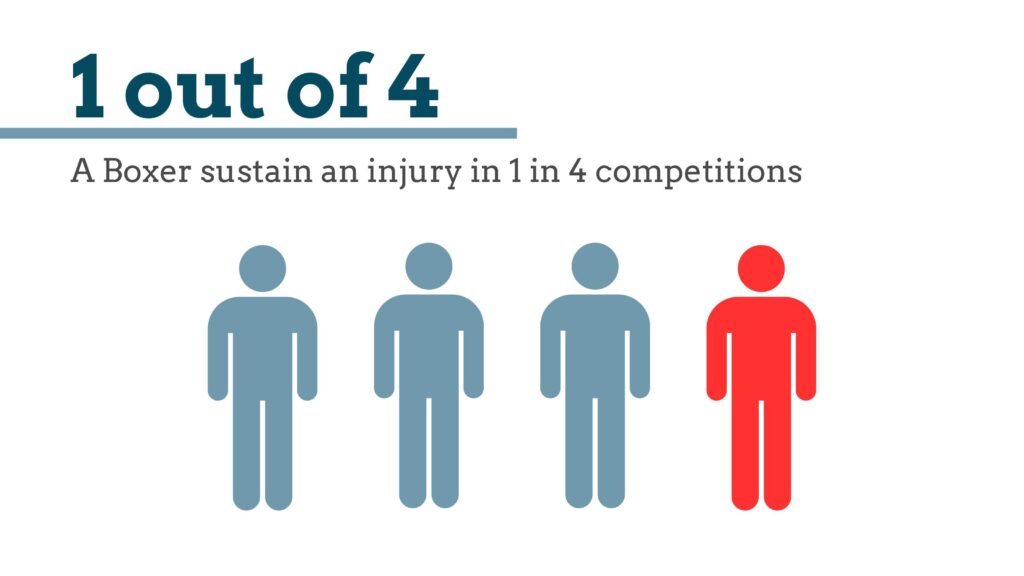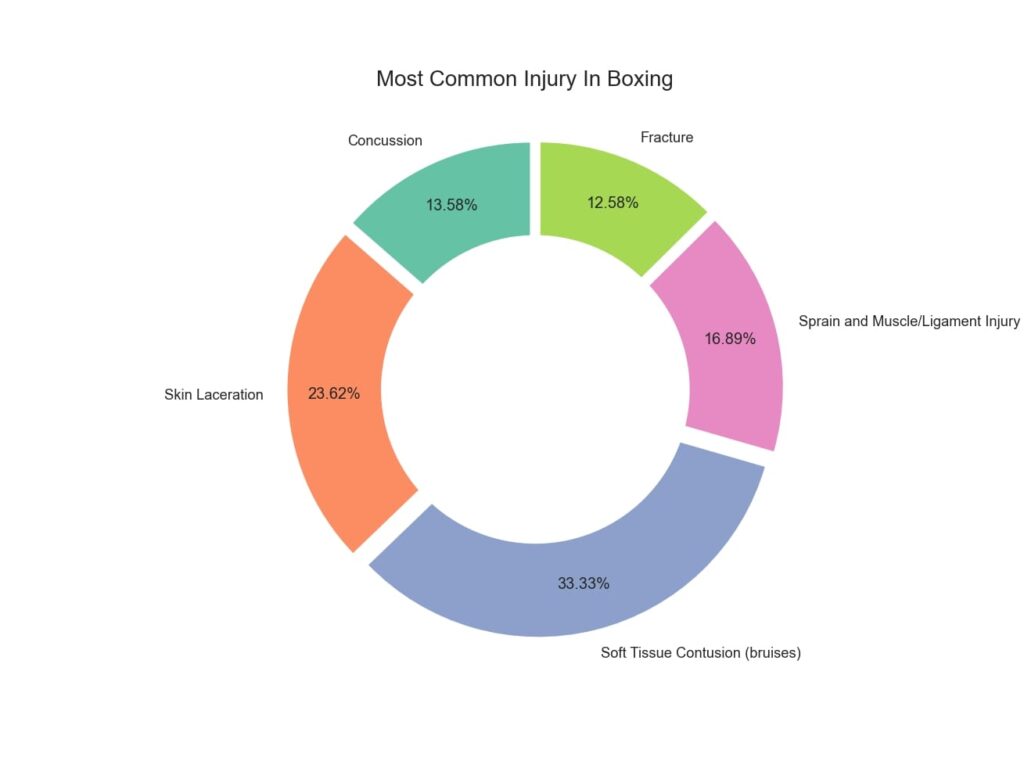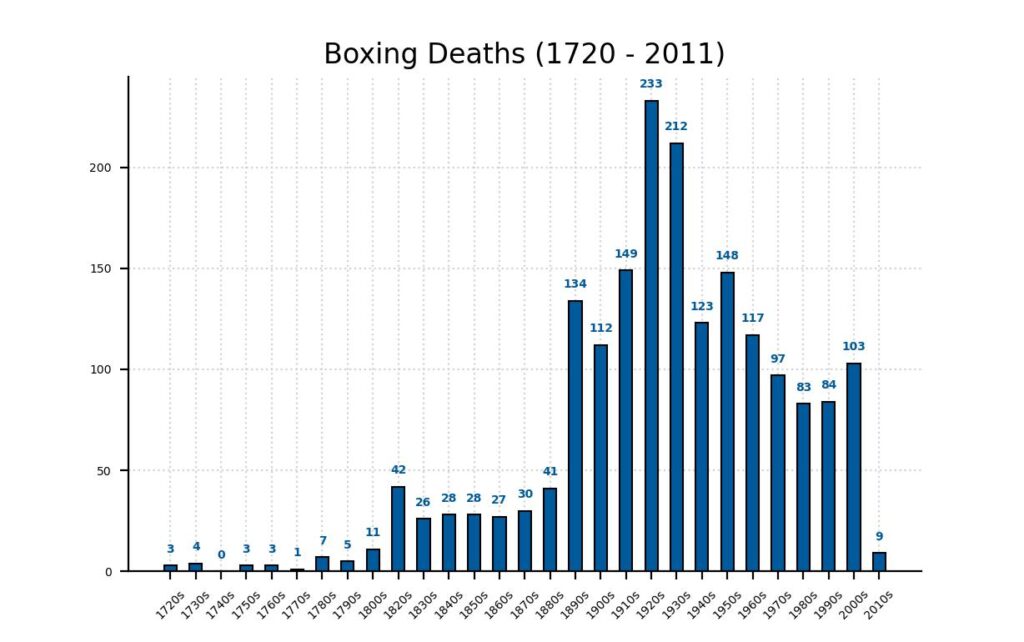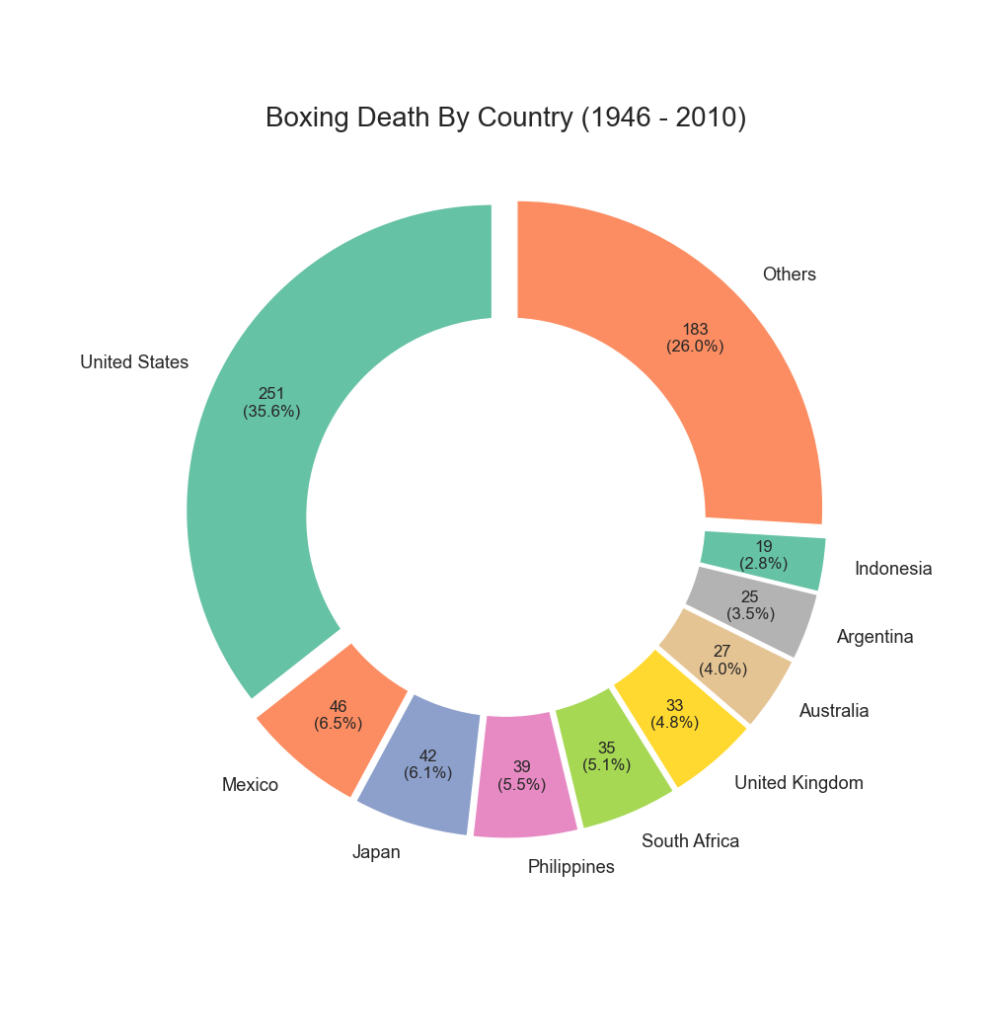By Oluchi Okoli, University of Cambridge Medicine
In this article, we will cover all the most important statistics related to injuries related to the sport of boxing.
‘Boxing’ and ‘injury’ commonly go hand in hand.
What other sports can you guarantee getting injured, regardless of whether you are victorious in the ring?
This is the rhetoric that is commonly heard and as a result, we were curious to find out how much the long-standing opinion was based on truth.
We decided to look at the studies associated with boxing injuries, and we analysed tons of global, varied data, from amateur to professional boxing and the wide range of injuries in between. As a result, we’ve done the key research, so you don’t have to!
We will cover boxing injuries statistics today.
Specifically, we will look at some of the risks and injuries associated with both amateur and professional boxing and we will separate fact from fiction.
If you want just the quick boxing injuries stats, you have it below.
Boxing Injuries Statistics: Editor’s Pick
- Frequency of injury: boxers sustain approximately 1 injury for every 4 competitions. In amateur boxing, boxers suffer an injury for every 2.5 hours in competition compared to every 772 hours of training.
- Injury Location: the most common injury location is to the head making up 71% with concussion making up 33% in this category.
- Most Common Injury Types: the most common injury type is bruises (30.2%), with concussions making up only 12%.
- Professional vs. Amateur boxing: professional boxing results in nearly x2 as many injuries as amateur boxing.
- Men’s & Women’s boxing: female boxers suffer over six times fewer fractures than male boxers.
- Headguards: studies suggest headgear offers minimal to no protection against concussions.
- Correlation between boxing and brain injury: no evidence has been found for a strong association between boxers and chronic traumatic brain injury.
- Fatalities in boxing: Since 1890, there have only been around 1600 deaths due to boxing.
- Number of Fatalities in boxing by country: Between 1946 to 2010, a total of 705 fatalities in the world, with the top 3 countries being the United States (35.6%), Mexico (6.5%), and Japan (6.1%) respectively.
Introduction To Boxing Injury Statistics
Boxing is a full-contact, disciplined sport that was first referenced in 688 BCE from an account of the 23rd Ancient Olympic Games. Today, it is enjoyed widely across the globe and has been in every modern Olympic Games since 1904.
However, due to its very nature, it is a sport that comes with inherent risks. Fights are won either by knockout or by points decision by judges and although the rules have developed with safety at the forefront, injuries still occur.
Perhaps the most infamous injury is that caused by Mike Tyson to Evander Holyfield when the two heavyweight boxing legends faced off for the second time. Although Tyson was disqualified, he left the fight with a chunk of Holyfield ear that he had bitten off!
The definitions of boxing injuries varied across the studies we looked at but in general, they included injuries that resulted directly from organised boxing activities, injuries that interrupted normal training or competition or injuries that required medical intervention.
Boxers sustain approximately 1 injury for every 4 competitions
Although this statistic seems scarily high, it must be remembered that competitions only make up a small part of a boxer’s lifestyle. Whether you are an amateur or professional boxer, hours of training happen to be prepared for mere minutes of competition.
Studies have shown that there is an injury rate of 233.3 per 1000 competitions or an expected injury for every 4.3 competitions. However, amateur boxing athletes suffer one injury for every 2.5 hours of competition compared to for every 772 hours of training.

The difference in injury rate between training and competitions can be explained by the fact that in training, punches happen in more controlled environments and many punches are ‘pulled’ meaning full contact isn’t made.
In contrast, in competition when adrenaline is high and the stakes are even higher, punches are less controlled, and injuries are more likely to occur.
The head is the most common injury location
A study showed that 71% of the boxing injuries were to the head with concussions making up only around one-third of these injuries.
This makes sense as punches to the head and the upper body generally score more points than those to the lower body and can make for an easy target during sparring or in competition.
The most common injury type is bruises, with concussions making up only 12% of injuries
In a study that considered the pooled frequencies of different injuries, from most common to least common, it went to soft tissue contusions (bruises), skin lacerations, sprains, concussions and then fractures.

Soft tissue contusion was the most common injury type accounting for nearly one-third of injuries.
This is more commonly known as a bruise, and it happens in boxing due to the blunt force of a punch which damages small blood vessels below the skin. This causes leakage into the surrounding tissues resulting in the characteristic discoloured or swollen skin.
Professional boxing results in nearly two times as many injuries as amateur boxing
Professional and amateur boxing follows different competition rules and regulations.
Amateur boxing is boxing which happens at the collegiate level and boxing is seen in the Olympics. In this form, there are three rounds that last for three minutes each and scoring is calculated based on clean hits to the opponent.
Professional boxing is similar in the sense that each round lasts for three minutes. However, there can be up to twelve rounds in a single competition and a fiercer fighting style as scoring is based mainly on how much you dominated each round with a direct cash reward as an incentive.
A study that looked into the injury rate per 1000 competition exposures found that it was 227.8 for amateur boxing and 379.8 for professional boxing.
The injury rates in amateur boxing in the past ten years were lower than previously reported studies. It is thought that this reflects the strides that the Amateur International Boxing Association has taken to prioritise the safety of boxers.
As a result, contrary to popular belief the injury risk in amateur boxing is lower than in taekwondo and karate, but higher than in judo.
Females suffer over six times less fractures than males
In a meta-analysis combining the results of various studies over the years, it was found that the combined synthesised frequency of fractures was 11.4% of injuries.
However, the injury percentage for women was less than 2%.
The differential statistic might be explained by the fact that research shows that punch force increases with heavier weight class and women weigh less on average than men.
No evidence has been found for a strong association between boxers and chronic traumatic brain injury
Due to the nature of boxing, where blows are aimed at the head, a concussion can be a risk.
Worryingly, only 6% of polled coaches have adequation knowledge of what a conclusion is and almost 70% of them had minimal knowledge about sideline assessment tools for a concussion.
The discourse around the subject of head guards has been confusing and in some cases controversial. Headguards were first introduced without scientific evidence of their efficacy and subsequent studies have shown that they are not very useful.
Although headgear protects against superficial injury like facial cuts, they are unhelpful for rotational punch forces—the main risk factor for concussion.
Due to this, in 2013, the International Boxing Association banned the use of headgear in elite amateur boxing competitions.
Headgear offers minimal to no protection against concussions
Chronic traumatic brain injury or chronic traumatic encephalopathy (CTE) is a degenerative brain condition that boxers are predisposed to. In a study, it was shown that CTE associated with boxing occurs in approximately 20% of professional boxers.
CTE occurs due to repetitive sub-concussive blows to the head and leads to abnormal protein deposits and the accumulation of these proteins resulting in brain cells dying.
Some of the symptoms include problems with cognition, memory loss, increased aggression, and problems with motor skills.
As discussed above, the most common location of boxing injuries is to the head and as a result, this condition is a major concern for many boxers. Furthermore, women are more likely to suffer negative long-term consequences after chronic traumatic brain injury compared to men.
Unfortunately, the only way CTE can be diagnosed is post-mortem and because of this, the evidence that is presented is difficult to place much weight on.
Despite a recent study finding no strong association between amateur boxing and CTE, it is a longer-term risk to boxing that could be further explored.
Since 1890, there have only been around 1600 deaths due to boxing
Between 1890 and 2011, around 1,604 boxers died due to injuries sustained in the ring.
The earliest fatality in professional boxing was Frankie Campbell. Campbell died in 1930 after a violent fight with the former heavyweight champion Max Baer.
His cause of death was double cerebral haemorrhage- not just one but two bleeding in his brain.
Although Campbell’s death shocked the world, it led to many positive changes and measures. This included mandatory medical examinations before and after fights, suspending fighters who weren’t deemed fit to compete and introducing weight classes for fairer fights.
However, it wasn’t until the 1980s that the British Boxing Board of Control, as well as many international sanctioning bodies, mandated a maximum of 12 by 3-minute rounds. Thankfully, deaths in boxing are very rare!

Between 1950 and 2007, there were 339 mortalities associated with professional boxing. Of these deaths, 64% of them were associated with knockout and 15% with technical knockout. 61% of the preterminal events occurred in the boxing ring, 22% outside the arena and 17% in the locker room.

Furthermore, deaths due to boxing vary from country to country. Between 1946 to 2010, a total of 705 fatalities occurred with the majority happening in the United States, Mexico, and Japan. This is reasonable as boxing is a popular sport in these countries.
Wrapping Up
And that was all the important boxing injury statistics.
Boxing has appealed to many people across years and generations. These days, it has gained popularity as a way for people to keep fit and has been advertised by models such as Gigi Hadid and Gisele Bundchen as a way to maintain their physiques.
However, boxing injuries do still occur.
These injuries can be minimised or prevented by proper technique and training, using the correct protective gear, and support in the form of supervision and coaching.
Don’t let these statistics put you off.
Injuries shouldn’t be a problem if you train safely, fight clean and rest well.
Sources: [1], [2], [3], [4], [5], [6], [7], [8], [9], [10], [11]